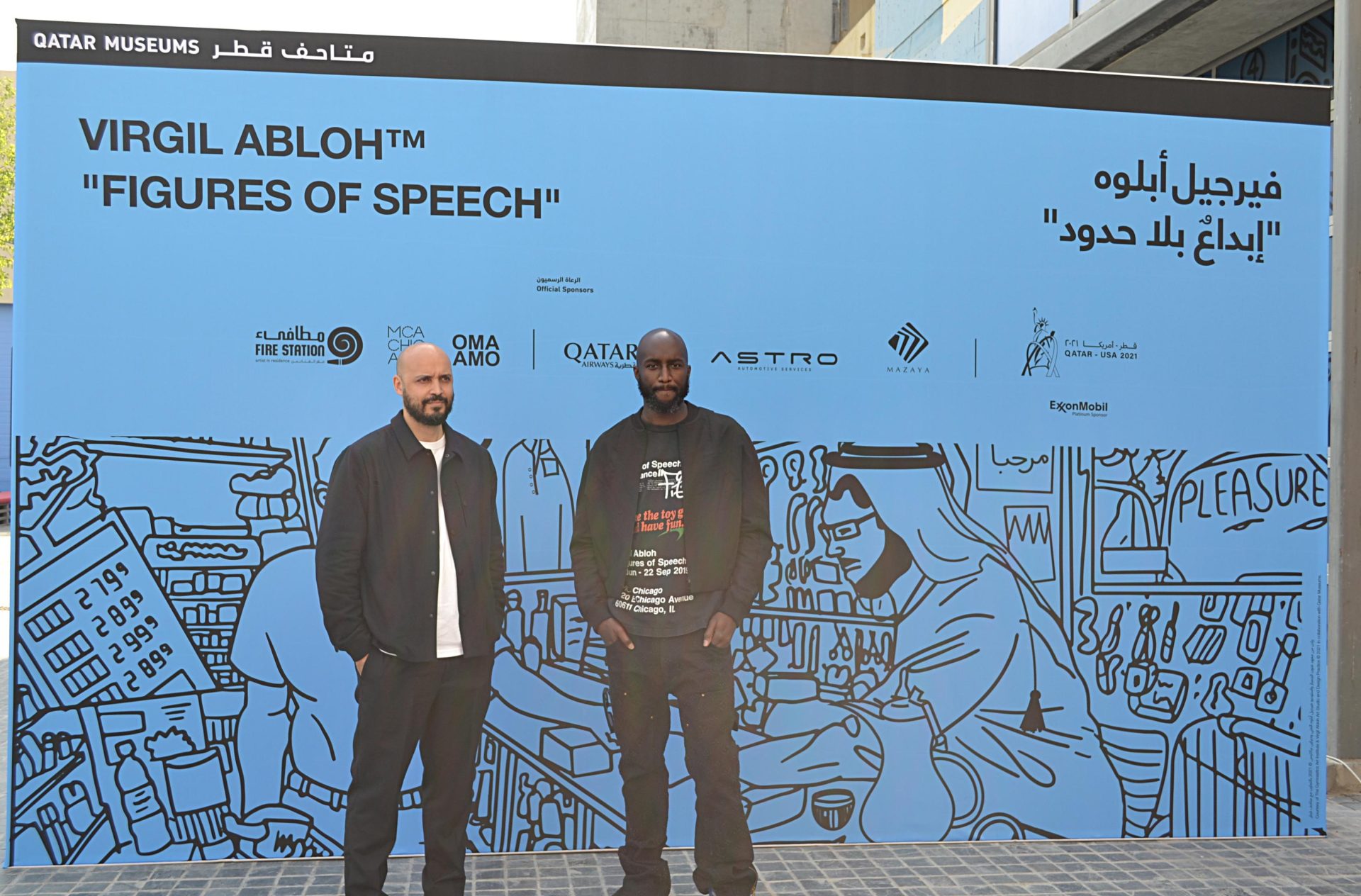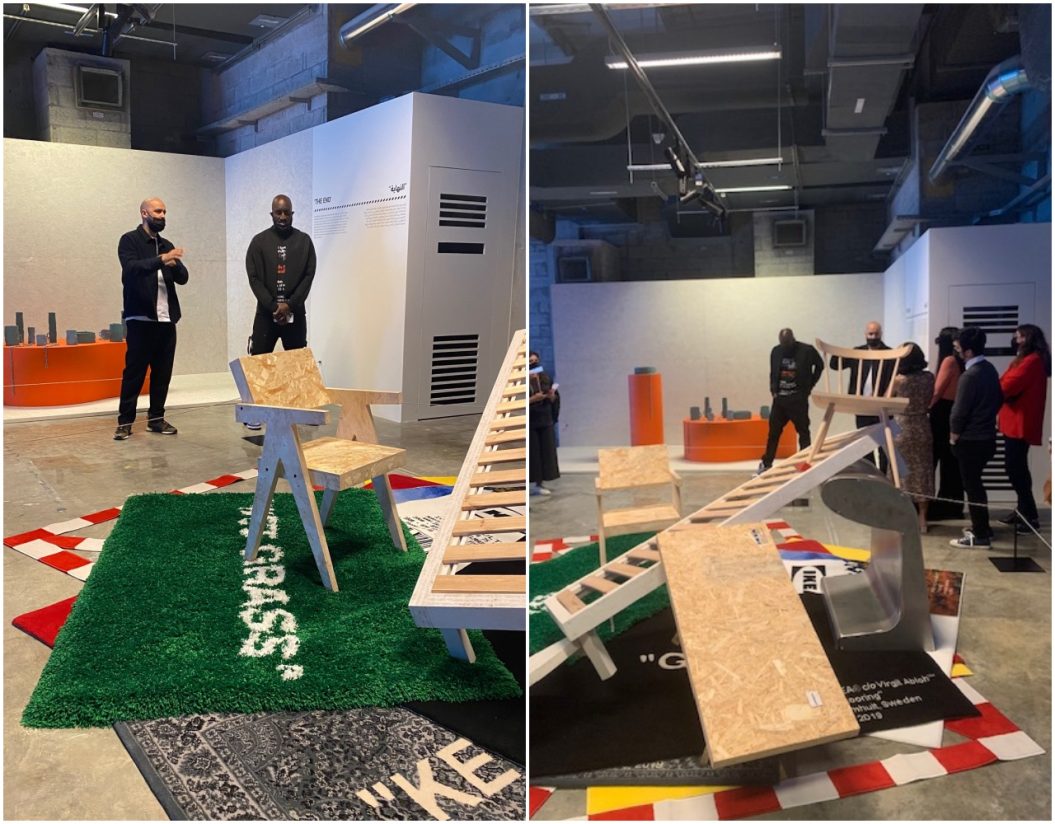Abloh-ism Showing in Doha
Qatar Museums is currently presenting Virgil Abloh: Figures of Speech, a mid-career retrospective of the acclaimed American artist and designer at the Fire Station’s Garage Gallery, on view until 31 March 2022.
Virgil Abloh’s work cannot be contained within titles of fashion, architecture, or even design. His work is a way of life, of life in downtown New York, of the youth, of the time he represents. He exists in the in-between, in the grey areas, or in the intermingling of all these titles defying all conventional hierarchies. He is known as both the creator and the disrupter, as someone who has recreated luxury, made it more accessible, not so much in price point than in understanding it, and thus has enlightened a generation.
 As he walked in casually through the gates of the Fire Station Museum in his signature printed black tees sporting dark sunglasses, he takes in his surroundings, recording moments and the context of his exhibition with his mobile device. Abloh is quite the man of the moment, of the epoch we are in, grounded, aware, and present. He is also very real, though he is quoted as saying, he is yet to reach that point: “I am trying to revert to that point, that point is what I call “authentically real”.
As he walked in casually through the gates of the Fire Station Museum in his signature printed black tees sporting dark sunglasses, he takes in his surroundings, recording moments and the context of his exhibition with his mobile device. Abloh is quite the man of the moment, of the epoch we are in, grounded, aware, and present. He is also very real, though he is quoted as saying, he is yet to reach that point: “I am trying to revert to that point, that point is what I call “authentically real”.
Qatar Museums with more than 55 works of this artist, tries to categorise his work, by offering an in-depth look at Abloh’s diverse pioneering practice that ranges from visual arts to music, fashion, architecture, and design. Figures of Speech is organised by Museum of Contemporary Art Chicago, adapted for this presentation by Qatar Museums, and designed by and in collaboration with AMO.
SCALE went on a press preview with the artist and the co-creator of the exhibition Samir Bantal, the director of AMO, and here is what we saw of “Virgil Abloh: Figures of Speech”.
Housed in the space designed by Bantal, the exhibition delves into the seven stages that placed Abloh in the upper echelons of the creative industries: “Early Work,” “Fashion,” “Music,” “Intermezzo,” “Black Gaze,” “Design,” and “The End.”
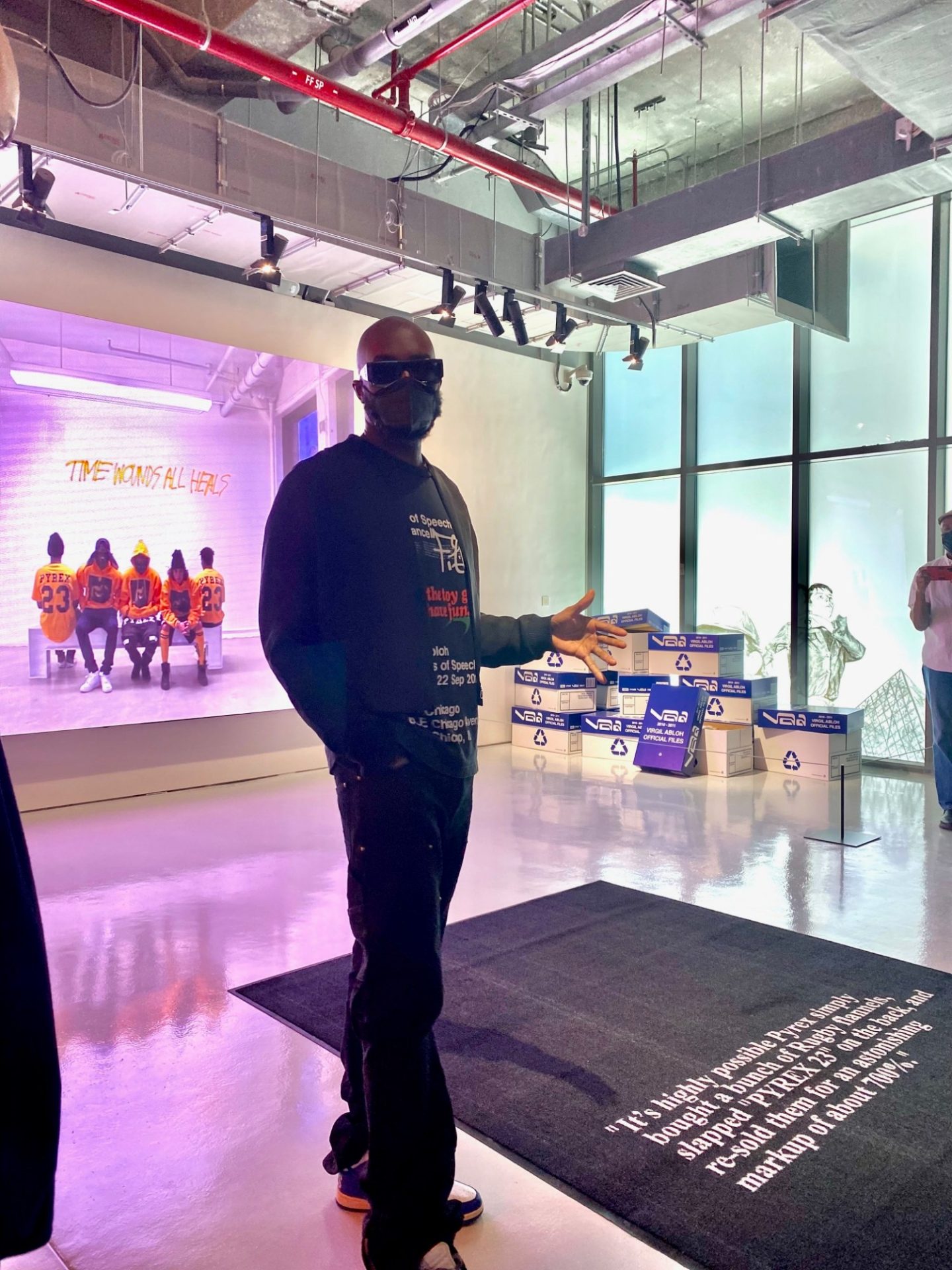 Transcending the ideas of discipline, Abloh’s work, since the initial show in Chicago, has grown to a continuous broadcast of creativity. The Fire Station provides a unique setting for the exhibition. Two large gallery spaces give the visitors the immersive experience to feel the variety of works, while the more intimate gallery 3 puts emphasis on the theme of race in Black Gaze. The outdoor courtyard connects all galleries and places some of Abloh’s works where they belong, in the city. The Doha edition of Virgil Abloh: Figures of Speech contains the Inflatable Bouncy Castle as well as the never before exhibited Customised Mercedes G-Wagon. The exhibition design also repurposes a number of elements from Qatar Museums’ previous exhibitions, such as the LED ticker signs and steel grates minimising waste.
Transcending the ideas of discipline, Abloh’s work, since the initial show in Chicago, has grown to a continuous broadcast of creativity. The Fire Station provides a unique setting for the exhibition. Two large gallery spaces give the visitors the immersive experience to feel the variety of works, while the more intimate gallery 3 puts emphasis on the theme of race in Black Gaze. The outdoor courtyard connects all galleries and places some of Abloh’s works where they belong, in the city. The Doha edition of Virgil Abloh: Figures of Speech contains the Inflatable Bouncy Castle as well as the never before exhibited Customised Mercedes G-Wagon. The exhibition design also repurposes a number of elements from Qatar Museums’ previous exhibitions, such as the LED ticker signs and steel grates minimising waste.
 As he walks the press through his work, Abloh says, “The Early Works establishes what I was thinking and making 20 years ago, before I started what I am doing now. Each work here is a reflection of the times that we live in, of the world that impacted me as creative, different cultural icons and moments in history and their implications on my mind.”
As he walks the press through his work, Abloh says, “The Early Works establishes what I was thinking and making 20 years ago, before I started what I am doing now. Each work here is a reflection of the times that we live in, of the world that impacted me as creative, different cultural icons and moments in history and their implications on my mind.”
Early Works is about posters, multi-media, and the youth energy of downtown New York that has influenced fashion. Beside a poster of one of Abloh’s early brands, he says, “These are all kids from downtown New York, a community that I fostered. This film showcases the idea that fashion or identity is not necessarily about the clothes but about the camaraderie and what is happening among that generation.”
“It is about doing things differently, about existing, using paintings as the backdrop with creativity added to it as a new layer,” he explains as we look at his merchandise designs and the other subversive notes he adds to his clothes.
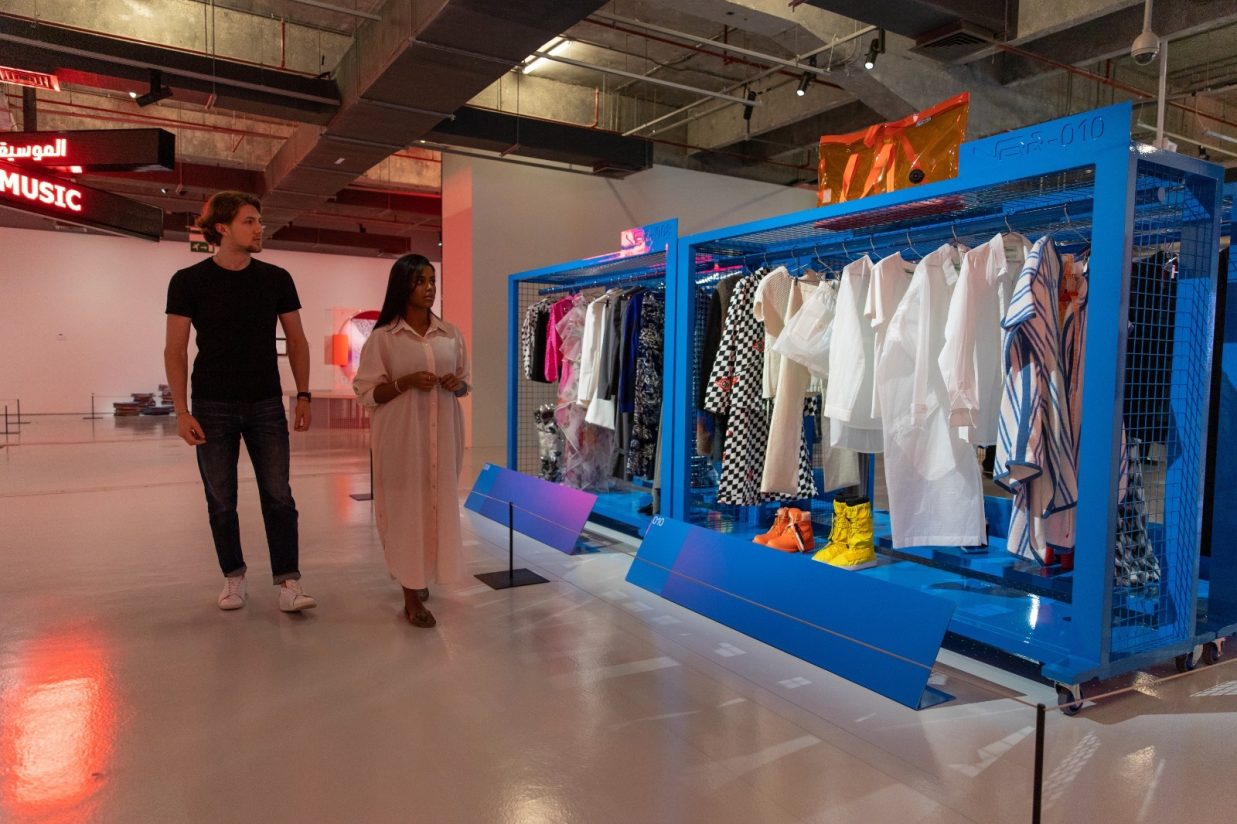 Abloh’s iconic clothes are on display at one side, within the Fashion segment, some of which took on an iconic value for the way it represented the era. He underplays the role he has played in the fashion world as he says, “Shown here are some works out of the 30-40 runway shows, starting from printed tee-shirts, but again, it is not about the actual garment but what represents the brand, the context, sometimes even before my time.”
Abloh’s iconic clothes are on display at one side, within the Fashion segment, some of which took on an iconic value for the way it represented the era. He underplays the role he has played in the fashion world as he says, “Shown here are some works out of the 30-40 runway shows, starting from printed tee-shirts, but again, it is not about the actual garment but what represents the brand, the context, sometimes even before my time.”

 In the Design segment of the exhibition, a Mercedes‑Benz G‑Class car designed by Abloh takes all attention. Abloh teamed up with Mercedes Benz to create a conceptual version of Merc’s G-class called Project Geländewagen. In this design, Abloh makes the viewer look at Mercedes-Benz designs with a fresh perspective, driving luxury away from a polished and flawless aesthetic to something raw, natural, and altogether more honest.
In the Design segment of the exhibition, a Mercedes‑Benz G‑Class car designed by Abloh takes all attention. Abloh teamed up with Mercedes Benz to create a conceptual version of Merc’s G-class called Project Geländewagen. In this design, Abloh makes the viewer look at Mercedes-Benz designs with a fresh perspective, driving luxury away from a polished and flawless aesthetic to something raw, natural, and altogether more honest.
Project Geländewagen retains the G‑Class’s iconic boxy form but is lower and wider to give it a more sporty look. The exterior was painted white and sanded by hand to emphasise its monolithic shape. Other adaptations to the traditional design include the removal of indicators, outside mirrors, and bumper bar. “We created a unique artwork that showcases future, interpretations of luxury, and the desire for beauty and the extraordinary. The result is something between reality and future.”
Other designs that Abloh has been involved in is the IKEA collection with classic minimalist designs and artistic references and subversive elements typical of Abloh’s work, with his iconic quotation marks found throughout. They add a sense of irony – perfect for people trying to build a home with a little high-fashion edge or looking to freshen up the one they already have, according to IKEA.
 “Black Gaze,” one of the more socially-driven installations within Abloh’s exhibit, brings the struggle of the social stigma of being different to life. In this section of the exhibit, Abloh displays some of his collaborations with Louis Vuitton which tackles the exclusion and commodification of Black art and fashion in white advertising spaces. In one series of photos, where a black boy poses with colourful Louis Vuitton bags, Abloh seeks to alter the white-centric approach to marketing that he studied growing up as an admirer and consumer of major fashion brands. The series accompanied Louis Vuitton’s spring/summer 2019 collection, “Dark Side of the Rainbow.”
“Black Gaze,” one of the more socially-driven installations within Abloh’s exhibit, brings the struggle of the social stigma of being different to life. In this section of the exhibit, Abloh displays some of his collaborations with Louis Vuitton which tackles the exclusion and commodification of Black art and fashion in white advertising spaces. In one series of photos, where a black boy poses with colourful Louis Vuitton bags, Abloh seeks to alter the white-centric approach to marketing that he studied growing up as an admirer and consumer of major fashion brands. The series accompanied Louis Vuitton’s spring/summer 2019 collection, “Dark Side of the Rainbow.”
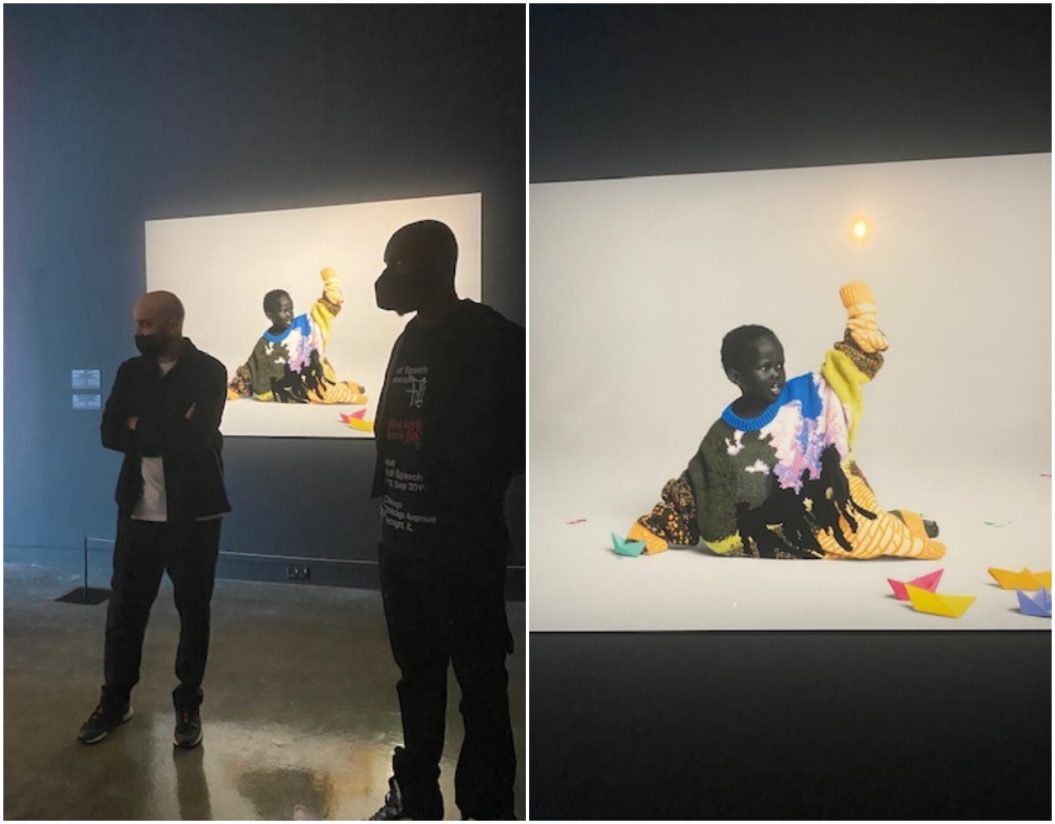
 This is one exhibition Dohaities need to visit, to demystify the life of luxury, make it more human than it ever was, all this without stripping it of its value but by adding a small amount of understanding sans the reverence, one constantly gives it.
This is one exhibition Dohaities need to visit, to demystify the life of luxury, make it more human than it ever was, all this without stripping it of its value but by adding a small amount of understanding sans the reverence, one constantly gives it.
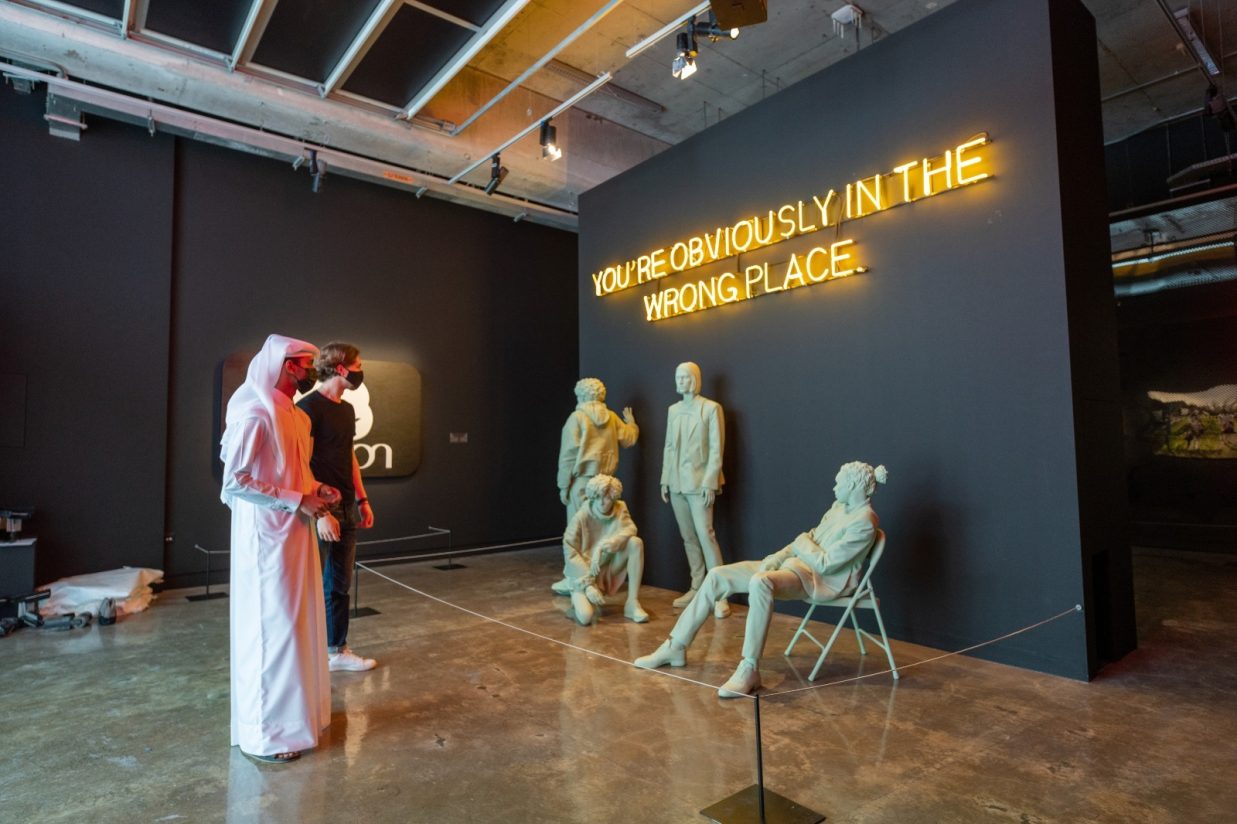 Representative of the man and his work is this quote used previously in a 2016 Off-White runway show that reads “YOU’RE OBVIOUSLY IN THE WRONG PLACE” (the line spoken by a condescending saleswoman to Julia Roberts in Pretty Woman) and that becomes representative of his style, his brand, and of Virgil Abloh himself.
Representative of the man and his work is this quote used previously in a 2016 Off-White runway show that reads “YOU’RE OBVIOUSLY IN THE WRONG PLACE” (the line spoken by a condescending saleswoman to Julia Roberts in Pretty Woman) and that becomes representative of his style, his brand, and of Virgil Abloh himself.

